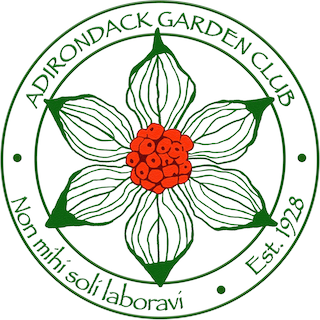Plastics: The trash that won't go away
Club members from the AGC, the Lake Placid Garden Club, and the public gathered to hear Judith Enck's advice on how to make an impact on the plastics crisis happening around us.
Most plastic comes from the litter that gets washed off beaches and our streets, washes into storm drains, and eventually ends up in the ocean. By 2050, there will be more plastic in the ocean than fish.
The reason plastic is so hard to remove from the ocean is it lies on the seafloor of the ocean. The gyres that circulate our ocean water accumulate plastic, which represents a small percentage of the plastic in the sea.
The small plastic, called microplastics, is eaten by fish, sea birds, and marine life. Plastic is made from chemicals and fossil fuels and therefore is a climate change issue. Now plastic is made from ethane, a waste product of hydrofracking.
Cracker plants are being built to convert ethane to ethylene, a building block for making plastic packaging. The cracker plants are mostly used to make single-use plastic packaging and will make single-use plastic even cheaper. Two hundred fifty are currently proposed to be built.
Many businesses use polystyrene (single-use plastic) because it is cheap. Fossil fuel industry looks to plastic production as the new growth opportunity.
Plastic production is an environmental issue as the plants emit toxic air contaminants and carbon dioxide. Most are located in low-income communities.
Chemicals migrate from packaging into food. The chemical PFOA is used in food packaging to create a greaseproof barrier in fast food packaging and microwavable popcorn bags. When heated, it dissolves into the popcorn.
More microplastics are turning up in our bodies through many things we eat or drink. People foolishly believe that bottled water is better for you, but bottled water has more microplastics than tap water.
Recycling our way out of the plastic problem won’t work because most plastics are fundamentally not recyclable. Only 9% are recycled, and yet plastic production is expected to increase at least fourfold between 2014 and 2050.
WHERE TO BEGIN:
1. Plastic Bags: only 5% are recycled. NY passed a ban but did not include a fee on paper. Counties and Cities can add the fee on paper bags.
2. Plastic Straws: Encourage restaurants, stores, and clubs to commit to strawless drink service and only offer upon request so disabled can access them if needed.
3. Polystyrene (common name - styrofoam): This is made from chemical styrene, a probable human carcinogen and is not biodegradable, not recyclable and lasts for over 500 years in landfills. Banned in NYC and Albany County; we need to
ban it in the Adirondacks.
4. Ban all three and win the Plastic Trifecta. Add plastic utensils and condiments (upon request), and prohibit the sale of plastic water bottles on NY property.
Educate and Eliminate:
Do this first in your own life.
Go to schools and college campuses - get the youth involved.
Work with faith-based groups, civic organizations, city council, and town boards.
Elicit support of county legislature.
Elicit help from state legislators.
Climate Change is a crisis. The United Nations says we have 12 years, that is until 2031 to avoid catastrophic impacts. We need you to jump in!
Use @Beyondplastics for more ideas on how to help.
